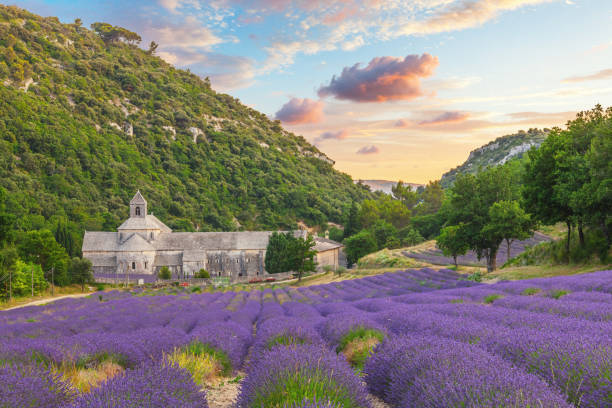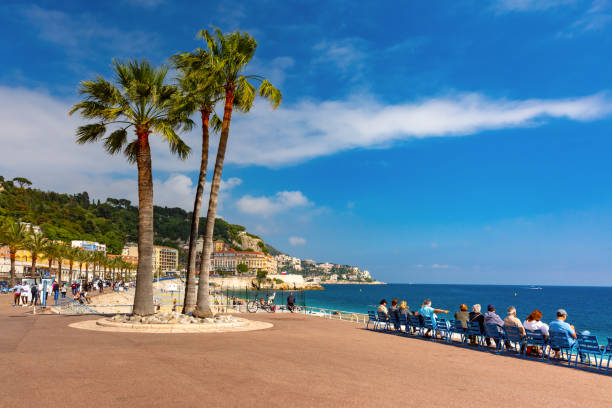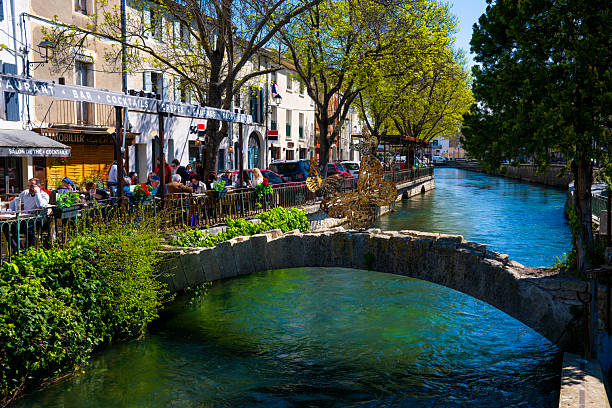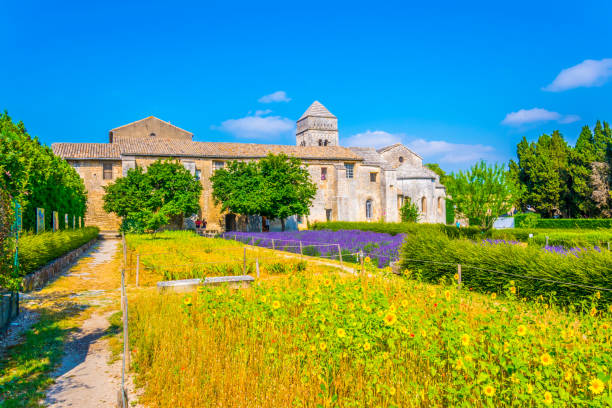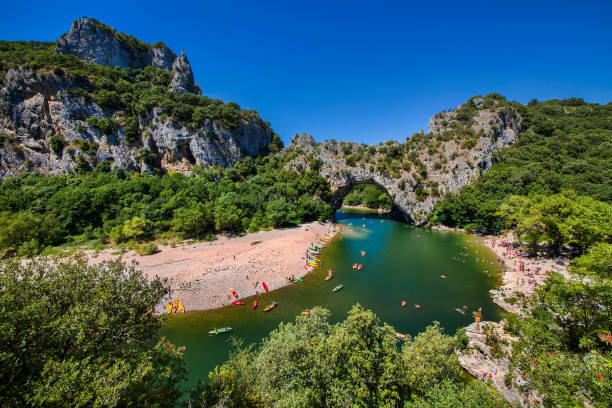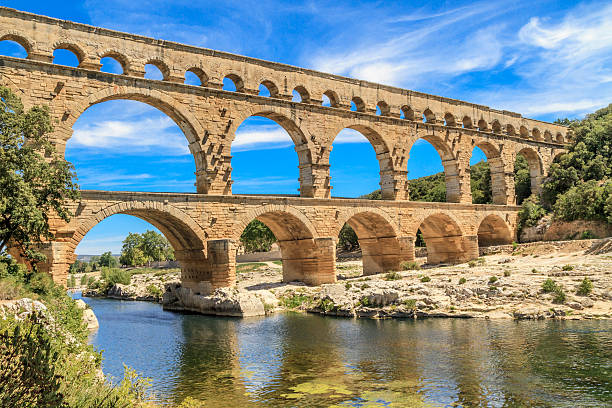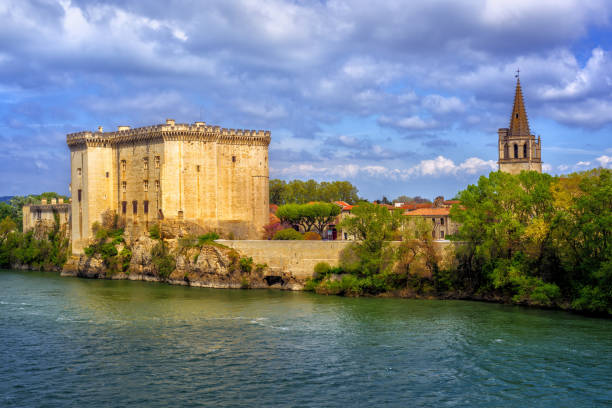Loading available options...
Overview
- Duration:11 days 10 nights
- Travelers:20 guests
- Tour Type:Cultural and thematic tours
- Language:English, French, Russian, Spain
The number of days can also vary depending on the wishes of the clients.
The cost of the guide and driver services, as well as accommodation in hotels - on request.
Tastings and entrance fees are paid on site.
Highlights
- Roman ruins and pink flamingos
- Lavender fields and medieval monasteries
- Picturesque gorges and antique shops
- Rose wine, melons, tapenade and bouillabaisse
Itinerary
Expand allDay 1. Nice
Arrival in Nice, the capital of the Cote d'Azur.
Accommodation at the hotel. Independent walk around the city.
In Nice, you need to walk along the famous Promenade des Anglais, Place Massena, the narrow streets of the old town and the flower market, and if this is not your first visit to the city, then visit the ruins of the once large Roman city of Semenelum (1st-4th centuries AD), as well as the wonderful rose park, the Franciscan monastery and the residence of Queen Victoria.
Dinner. Night in Nice.
Day 2. Provence
Departure from the hotel in Nice. Transfer to the Provence region.
Visit to the city of Saint-Maximin-la-Sainte-Baume and the church with the relics of Mary Magdalene. Nice - Saint-Maximin-la-Sainte-Baume - 138 km, ≈1 hour 40 minutes on the road.
Transfer to the city of Aix-en-Provence. Saint-Maximin-la-Sainte-Baume - Aix-en-Provence - 44 km, ≈35 minutes on the road.
Walk around the city. Aix-en-Provence is the birthplace of Cezanne, a cozy city with a rich history.
Dinner.
Accommodation at the hotel in Aix-en-Provence.
Day 3
Departure from the hotel in Aix-en-Provence. Transfer to Les Baux-de-Provence. Aix-en-Provence – Les Baux-de-Provence – 72 km, ≈1 hour on the road.
Les Baux-de-Provence is one of the most picturesque and popular villages in Provence among tourists. After a walk around the city, you can visit the Cathedral of Images, also known as the Quarry of Light (Carrières de Lumières) – a unique “exhibition” of light and music in an abandoned bauxite quarry. Lunch.
Transfer to Saint-Rémy-de-Provence. Les Baux-de-Provence – Saint-Rémy-de-Provence – 11 km, ≈20 minutes on the road.
Acquaintance with Saint-Rémy – the birthplace of the famous Nostradamus.
Visit to the monastery of Saint-Paul-de-Mausole (Monastère Saint- Paul-de-Mausole) in the suburbs of Saint-Remy-de-Provence. The artist Vincent Van Gogh was treated here, and here he created 150 of his paintings.
Accommodation at a hotel in Baux-de-Provence. Dinner.
Day 4
Visit to Tarascon, the center of European medieval culture and history.
Les Baux-de-Provence – Tarascon – 18 km, ≈25 minutes on the way.
The castle in Tarascon is one of the best preserved in France. It is the former residence of Count René of Anjou, King of Provence. The castle houses a collection of remarkable tapestries from Flanders from the 17th century.
Transfer to the Abbey of Saint Roman (Abbaye de Saint Roman) and visit to the farm Le Mas des Tourelles. Tarascon – Abbey of Saint Roman – 9 km, ≈20 minutes on the way.
The farm is made according to the type of Roman farms and wines are produced here in the same way as they did in ancient Rome. These wines differ in taste from the usual French wines.
Lunch.
Visit to the monastery in Beaucaire.
Abbey of Saint-Roman - Beaucaire - 8 km, ≈20 minutes on the way.
Return to the hotel in Baux-de-Provence. Dinner.
Day 5
Departure from the hotel to Baux-de-Provence.
Visit to Avignon. Baux-de-Provence – Avignon – 32 km, ≈40 minutes on the way. Avignon is a city of churches and bells, a fortress city, the “city of Popes”. Lunch.
Transfer to Isle-sur-la-Sorgue – the Provencal Venice with antique shops. Avignon – Isle-sur-la-Sorgue – 31 km, ≈35 minutes on the way.
Visit to Fontaine-de-Vaucluse. Isle-sur-la-Sorgue – 13 km, ≈18 minutes on the way. Petrarch lived in Fontaine-de-Vaucluse. An inexhaustible spring, the largest source of fresh water in France, flows here.
Arrival in Gordes – a picturesque town on a cliff in the Vaucluse mountains. Fontaine de Vaucluse – Gordes – 20 km, ≈25 minutes on the way. Near Gordes is one of the most famous lavender fields of Provence.
Dinner.
Accommodation at the hotel in Gordes.
Day 6
Visit to Senanque Abbey (Abbaye Notre-Dame de Senanque) at the foot of Gordes.
Senanque Abbey with its austere Romanesque architecture against the backdrop of a picturesque lavender field is one of the most photographed places in all of Provence.
Lunch.
Visit to the village of Les Bories.
The village of Les Bories is an open-air museum, a settlement consisting of about 20 stone huts, just like the ancient peoples had.
Transfer to Orange. Le Bories - Orange - 64 km, ≈1 hour on the road.
The most important of the remaining Roman monuments of the city is, of course, the Arch, standing on the ancient road connecting Arles with Lyon. The famous ancient theater of Orange was built under the emperor Augustus. The ancient theatre of Orange still hosts performances.
Transfer to the Monts d’Ardèche Nature Reserve (Parc Naturel Regional des Monts d’Ardèche).
Accommodation at a hotel in the region. Orange – hotel – 72 km, ≈1 hour 10 minutes on the way.
Dinner.
Day 7. Trip to the Ardeche Gorge
The picturesque Ardèche Gorge is a 30-kilometer area along the Ardèche River, the most beautiful gorge in France. The water has carved out not only dizzying bends in the rocks, but even a natural bridge in the form of an arch (Pont d'Arc), 66 meters high. There is a small beach near it.
In the warm season, you can raft on the river and even fish.
Breathtaking views stretching to the horizon are complemented by picturesque settlements of ancient monks.
After lunch, return to the hotel.
Day 8
Departure from the hotel in the area of the Mont d'Ardèche Nature Reserve.
Trip to the Château de Roure castle-museum. Hotel - Château de Roure - 24 km, ≈30 minutes on the way. The castle-museum is located in the very center of the village and is surrounded by houses. Here you can see how silkworms were bred.
Transfer to the Grotto of Orgnac (Aven d'Orgnac). Château de Roure - Grotto of Orgnac - 7 km, ≈10 minutes on the way.
Visit the Grotto of Orgnac and the prehistoric museum. The Grotto of Orgnac is the largest and most fantastic grotto in France.
Transfer to the south, towards Arles and Nîmes, visiting the Pont du Gard on the way. Grotto of Orgnac - Pont du Gard - 62 km, ≈1 hour 10 minutes on the way.
The Pont du Gard is the highest surviving ancient Roman aqueduct.
Pont du Gard – Nîmes – 31 km, ≈30 minutes on the way.
Getting to know Nîmes. The city has preserved many monuments from the Roman era – it is often called the French Rome.
Accommodation in a hotel in Nîmes or its surroundings.
Day 9. Arles
Departure from the hotel in Nimes or the surrounding area. Visit to the city of Arles.
Hotel – Arles – 22 km, ≈25 minutes on the way.
Arles is a typical colorful town of southern Provence, in the past it was one of the Roman provinces, it has long attracted visitors with its ancient Roman architectural monuments! The city was called "Little Rome of the Gauls" because for 12 centuries it was the capital of Provence. The great Van Gogh lived and worked in Arles.
Moving to the Camargue. Arles – Camargue National Park – 29 km, ≈30 minutes on the way.
The Camargue is an amazing area inhabited by flamingos, wild ducks, large herds of bulls and horses.
Moving to Marseille. Camargue National Park – Marseille – 115 km, ≈1 hour 25 minutes on the way.
Accommodation at the hotel in Marseille.
Day 10. Getting to know Marseille
Marseille is the second largest city in France, one of the largest and oldest ports on the Mediterranean. It was founded by the Greeks 26 centuries ago.
Attractions to visit in Marseille: La Cathédrale de la Nouvelle Major. This magnificent cathedral was built by order of Napoleon III in the 19th century. Designed in the Romano-Byzantine style, it took 20 years to build.
Centre de la Vieille Charité.
Situated in the Panier district, this beautiful 17th-century building originally began life as a workhouse and hospice.
The main attraction of Marseille is the old port (Vieux Port).
The famous Château d'If.
One of the most impressive sights in Marseille is the Palais du Pharo.
The Basilica of Notre Dame de La Garde, a Romanesque-Byzantine cathedral, is the most notable landmark in Marseille.
While in Marseille, you can take a boat trip around the calanques, deep rocky bays on the coast.
Return to your hotel in Marseille.
Day 11
Departure from the hotel in Marseille. Transfer to the airport.
End of the program. Departure.
Includes/Excludes
- Transport in air-conditioned, 16–seat mini coach
- Driver/guide
- Lunch and refreshments
- Admission fees for attractions
- Gratuities (optional)














